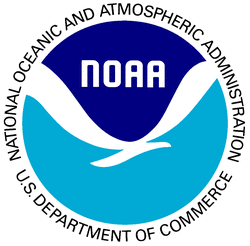NASA, NOAA Say They Can Vastly Improve Weather Prediction
NASA and the National Oceanic and Atmospheric Administration
(NOAA) say they've come up with new research that has helped to
improve the accuracy of medium-range weather forecasts in the
Northern Hemisphere.

NASA and NOAA scientists at the Joint Center for Satellite Data
Assimilation (JCSDA) in Camp Springs, MD, came up with procedures
to improve forecasting accuracy. The scientists worked with
experimental data from the Atmospheric Infrared Sounder (AIRS)
instrument on NASA's Aqua satellite.
They found incorporating AIRS data into numerical weather
prediction models improves the accuracy range of experimental
six-day Northern Hemisphere weather forecasts by up to six hours, a
four percent increase. AIRS is a high-spectral resolution infrared
instrument that takes 3-D pictures of atmospheric temperatures,
water vapor and trace gases.
The instrument data have officially been incorporated into
NOAA's National Weather Service's operational weather
forecasts.
"NASA is assisting the world's weather prediction agencies by
providing very detailed, accurate observations of key atmospheric
variables that interact to shape our weather and climate," said Dr.
Mary Cleave, associate administrator for NASA's Science Mission
Directorate. "The forecast improvement accomplishment alone makes
the AIRS project well worth the American taxpayers'
investment."
 "This AIRS instrument has provided
the most significant increase in forecast improvement in this time
range of any other single instrument," said retired US Navy Vice
Adm. Conrad C. Lautenbacher, Jr., Ph.D., Undersecretary of Commerce
for Oceans and Atmosphere and NOAA administrator.
"This AIRS instrument has provided
the most significant increase in forecast improvement in this time
range of any other single instrument," said retired US Navy Vice
Adm. Conrad C. Lautenbacher, Jr., Ph.D., Undersecretary of Commerce
for Oceans and Atmosphere and NOAA administrator.
"Climate and weather forecasts are dependent upon our
understanding current global ocean and atmosphere conditions. If we
want to be able to predict what the weather will be like in the
future, we must adequately define the global conditions today.
Satellite data, like AIRS provides, is a vital link for NOAA to
continuously take the pulse of the planet."
"A four percent increase in forecast accuracy at five or six
days normally takes several years to achieve," said JSCDA Director,
Dr. John LeMarshall. "This is a major advancement, and it is only
the start of what we may see as much more data from this instrument
is incorporated into operational forecast models at NOAA's
Environmental Modeling Center."
 The European Center for Medium Range
Weather Forecasts began incorporating data from AIRS into their
operational forecasts in October 2003. The center reported an
improvement in forecast accuracy of eight hours in Southern
Hemisphere five-day forecasts.
The European Center for Medium Range
Weather Forecasts began incorporating data from AIRS into their
operational forecasts in October 2003. The center reported an
improvement in forecast accuracy of eight hours in Southern
Hemisphere five-day forecasts.
AIRS is the result of more than 30 years of atmospheric
research. It is led by Dr. Moustafa Chahine of NASA's Jet
Propulsion Laboratory, Pasadena, Calif. AIRS is the first in a
series of advanced infrared sounders that will provide accurate,
detailed atmospheric temperature and moisture observations for
weather and climate applications.
The JCSDA is operated by NOAA, NASA, the US Air Force and Navy.
The goals of the center are to accelerate the use of observations
from Earth-orbiting satellites to improve weather and climate
forecasts, and to increase the accuracy of climate data sets.
 Airborne-Flight Training 05.09.24: ERAU at AIAA, LIFT Diamond Buy, Epic A&P
Airborne-Flight Training 05.09.24: ERAU at AIAA, LIFT Diamond Buy, Epic A&P ANN's Daily Aero-Term (05.07.24): Hazardous Weather Information
ANN's Daily Aero-Term (05.07.24): Hazardous Weather Information Aero-News: Quote of the Day (05.07.24)
Aero-News: Quote of the Day (05.07.24) NTSB Final Report: Cessna 150
NTSB Final Report: Cessna 150 Aero-News: Quote of the Day (05.08.24)
Aero-News: Quote of the Day (05.08.24)





